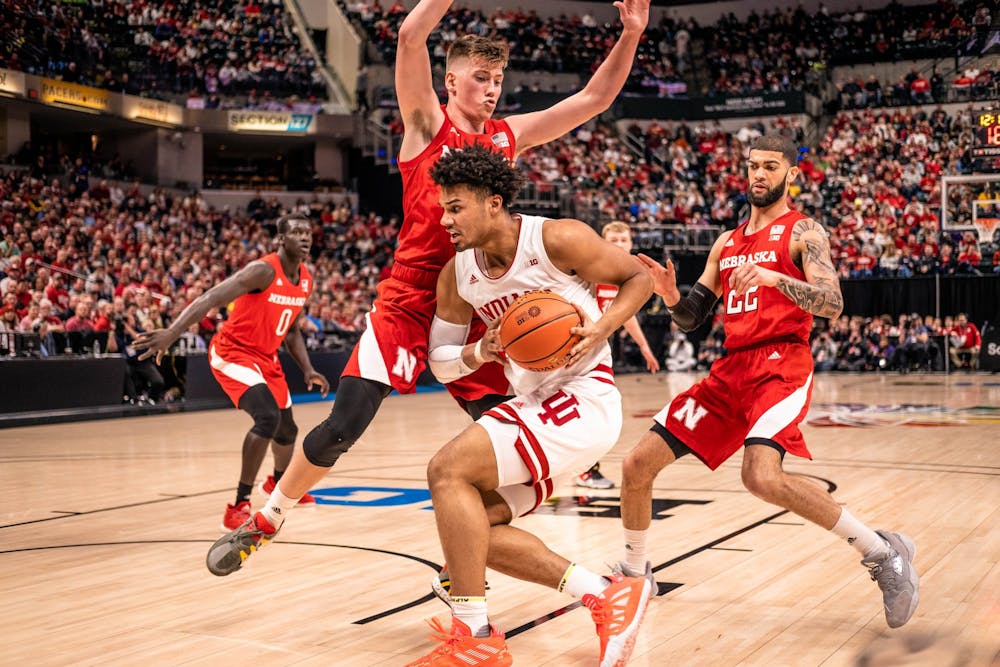The NBA announced that the league would be returning to play in an isolated bubble on the campus of Walt Disney World in Lake Buena Vista, Florida, on June 4. Since then, the season has gone off without a hitch, with zero positive cases of COVID-19. Bubbles are the easiest way to play sports safely during the pandemic and may be the only way IU basketball and the rest of the Big Ten takes the court this winter.
Location
In a typical year, the Big Ten hosts its basketball tournament in either Chicago or Indianapolis (one-time stops in Washington, D.C. and New York notwithstanding). Both of those cities make a lot of sense from a geographical standpoint, with the majority of the conference in the Midwest.
Between the two options, Indianapolis is the best choice. CBS Sports college basketball insider Jon Rothstein reported the NCAA was considering a bubble in downtown Indianapolis, which makes sense as the city has been the location of many premier events including NCAA Tournament regionals, the Final Four and Super Bowl XLVI.
The compact layout of the city bodes well for a bubble environment, and a benefit for Indianapolis is the SkyWalk, a series of interconnected tunnels and indoor walkways that stretch across the city. This interconnectivity throughout the city would allow teams to remain isolated from the outside world while granting them some freedom and ease of transportation.
Venues
While Indianapolis is home to multiple basketball-specific venues, including the Indiana Pacers’ Bankers Life Fieldhouse, Butler University's Hinkle Fieldhouse and IUPUI’s Indiana Farmers Coliseum, none of those would be used in my bubble plan. Instead, the games would be played at the Indiana Convention Center and the Colts’ Lucas Oil Stadium.
Why those venues over arenas designed for basketball? They are connected on the SkyWalk, allowing for players, coaches and team personnel to safely travel to games while limiting contact as much as possible.
While it may seem odd to have basketball games in a convention center and NFL stadium, both of these venues have actually been home to basketball games in the past. The Indiana Convention Center hosted the AAU Tournament of Champions event in July, and Lucas Oil Stadium was the location of the 2010 and 2015 NCAA Final Four and is scheduled to hold the 2021 Final Four. Additionally, these spaces are big enough to build multiple courts in them to maximize the number of games able to be played.
Housing
One important piece for making the bubble work is finding adequate housing for all the teams. With the Indiana Convention Center and Lucas Oil Stadium housing the games, teams would stay in one of the 12 hotels connected to those venues via the SkyWalk. This creates the ultimate ease of commuting and safety as those within the bubble are truly sealed off from the outside world.
Format and Schedule
College basketball schedules are going to look very different in 2020 compared to the typical season. Since 2017, Big Ten teams have played a 20-game conference schedule — 10 home games and 10 away — plus a 10 to 12 game nonconference schedule.
In a conference-only bubble, Big Ten teams potentially will play zero nonconference opponents unless smaller nonconference bubbles are played before the bubble is created, as is reportedly possible with IU and the Maui Invitational. If nonconference bubbles are held, it would give the Big Ten enough time to start its bubble around January 1. The conference could keep its 20-game conference schedule and finish the regular season and start its tournament by early March, hopefully paving a way for a potential NCAA tournament.
While a bubble may be the only option to save the season, a Big Ten season without fans could make for a very different season from 2019-20. Home teams dominated during conference play last year, going a combined 178-57, including only two teams with more than five losses and three teams with just one home loss. This season, home-court advantage could be as simple as a virtual pep band or student section.
While a lot is yet to be decided when it comes to the upcoming Big Ten basketball season, one thing is for certain, the safest and most likely path to playing involves a bubble.






